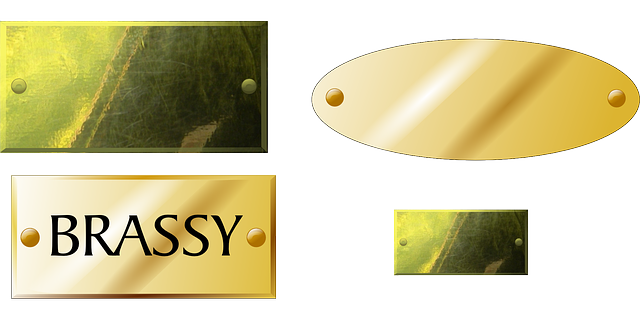401(k) plans typically offer stocks, bonds, and mutual funds, whereas a Gold IRA allows for investment in physical gold, silver, platinum, and palladium as part of self-directed Individual Retirement Accounts. A Gold IRA can serve as a hedge against inflation and currency devaluation due to gold's historically stable value. To transfer to a Gold IRA, one must choose eligible precious metals that meet the IRS fineness standards, use an IRS-approved custodian, and follow transaction regulations. The process involves rolling over funds from a traditional or Roth 401(k) into a self-directed IRA account without triggering penalties, usually after reaching age 59½. Individuals under this age may need to consider exceptions and potential tax implications. Investors should work with financial advisors knowledgeable in these accounts and select metals that comply with the IRS's purity standards, maintaining them in an IRS-approved depository until retirement. The transition requires careful adherence to annual contribution limits and understanding of RMDs and tax consequences post-72. Precision and professional guidance are key for a successful shift to a Gold IRA.
Navigating the transition from traditional retirement savings to a Gold IRA can be a strategic move for wealth preservation and diversification. This article delves into the transformative process of converting a 401(k) into a self-directed Gold IRA, focusing on physical gold and other precious metals. We will explore the nuances of Gold IRAs, eligibility criteria, and a step-by-step guide to effectuate this change. Beyond the financial implications, we’ll examine the potential benefits of gold as an investment within your retirement portfolio. Additionally, we’ll address key precautions and considerations to ensure a smooth rollover process. Join us as we illuminate the path from traditional 401(k) plans to the tangible security of a Gold IRA.
- Understanding Gold IRAs
- Eligibility and Requirements for Transfer
- Steps to Convert 401(k) to Gold IRA
- Benefits of Investing in Gold Through an IRA
- Precautions and Considerations When Rolling Over to a Gold I
Understanding Gold IRAs

401(k) plans are traditional retirement savings vehicles offered by employers, typically investing in stocks, bonds, and mutual funds. In contrast, a Gold IRA represents a distinct investment avenue within the realm of self-directed Individual Retirement Accounts. This type of IRA allows for the allocation of a portion of one’s retirement savings into physical gold, silver, platinum, and palladium. The appeal of a Gold IRA lies in its potential to diversify an investment portfolio and hedge against inflation and currency devaluation, as gold has historically maintained its value over time.
To pursue a Gold IRA, one must comprehend the intricacies of this investment, including the types of precious metals eligible for holding within such an account, the custodial requirements, and the rules governing transactions and ownership. Precious metals must meet specific fineness criteria set forth by the Internal Revenue Service (IRS), ensuring that they are pure enough for inclusion in a Gold IRA. The process of converting a 401(k) to a Gold IRA involves transferring or rolling over funds from the original account to a reputable custodian specializing in precious metals IRAs, after which the investor can acquire approved bullion and coins. This strategic financial move can offer a more secure and balanced investment approach for those looking to safeguard their retirement savings against economic volatility.
Eligibility and Requirements for Transfer

Individuals interested in converting their traditional or Roth 401(k) plan to a gold IRA must first satisfy certain eligibility criteria and comply with specific requirements. The Internal Revenue Service (IRS) stipulates that account holders must be at least 59½ years old to make a direct rollover from a 401(k) to an IRA without incurring the penalty for early withdrawal. If under this age, the distribution is considered a premature withdrawal and may be subject to taxes and additional penalties unless an exception applies.
Once eligibility is established, the account holder can initiate a transfer by setting up a self-directed IRA with a trustee or custodian that allows for investments in precious metals. The process begins with the rollover procedure, where funds from the 401(k) are transferred directly to the new IRA account, known as a gold IRA. It’s crucial to work with both a knowledgeable financial advisor and an IRS-approved precious metals custodian to ensure that all legal and tax obligations are met. The custodian will provide guidance on the types of physical gold, silver, platinum, and palladium coins and bullion bars that meet the IRS’s purity standards for IRA investments. Additionally, the account holder must ensure that the transfer is done in compliance with the annual contribution limits set by the IRS for IRAs. This includes monitoring the total amount contributed across all IRAs to avoid exceeding the allowable contribution limit, which can result in taxes and penalties.
Steps to Convert 401(k) to Gold IRA

When considering the conversion of a traditional 401(k) plan into a Gold IRA, it is imperative to understand the process and comply with the rules governing such transactions. The first step involves locating a reputable custodian that specializes in self-directed IRAs and handles precious metals. This custodian will guide you through the necessary procedures and ensure compliance with Internal Revenue Service (IRS) regulations. Once you have selected a custodian, you must establish a new self-directed IRA account.
After setting up your Gold IRA account, the next step is to fund it. You can do this by rolling over funds from your existing 401(k) plan. This rollover can be direct, where the funds are moved directly from your 401(k) to your new IRA, or indirect, where you receive a distribution from your 401(k) and then deposit it into your Gold IRA within a specific timeframe as stipulated by the IRS. It is crucial to handle this transfer carefully to avoid taxable events and penalties.
Upon funding your new account, you may proceed to select the type of gold and other precious metals permitted in an IRA. The IRS outlines specific purity standards for gold coins and bars. Your custodian will help you choose investments that meet these criteria and that align with your investment goals and risk tolerance. After purchasing the approved precious metals, they are delivered to a depository chosen by your custodian, where they are securely held in your name until retirement. Regularly monitoring your Gold IRA’s performance and making adjustments as needed will be part of maintaining your investment strategy.
Benefits of Investing in Gold Through an IRA

Precautions and Considerations When Rolling Over to a Gold I

When considering the conversion of a 401(k) to a Gold IRA, it’s crucial to conduct thorough research and understand the implications of this financial move. One must carefully select a reputable custodian that specializes in precious metals and ensure compliance with Internal Revenue Service (IRS) regulations regarding self-directed IRAs. The IRS mandates specific purity standards for gold and other precious metals held within a Gold IRA, which vary depending on the metal type—gold must be at least 99.5% pure, for instance.
Additionally, investors should be aware of the tax treatment of such transactions. Rolling over funds from a 401(k) to a Gold IRA is generally a tax-free process if completed correctly. However, once you reach the age of 72, required minimum distributions (RMDs) will apply, and these distributions are subject to income tax. It’s also imperative to manage the transfer meticulously to avoid any taxes or penalties on the transfer itself. A professional financial advisor can guide you through this process, helping you navigate the complexities of choosing the right type of gold bullion, coins, or bars, and understanding the fees associated with storage and maintenance of a Gold IRA. By carefully planning and following the necessary steps, investors can effectively transition their retirement savings into a Gold IRA while adhering to all legal and financial requirements.
In conclusion, transitioning your 401(k) into a Gold IRA opens a unique investment avenue that leverages the historical stability of gold. By understanding the nuances of Gold IRAs, meeting eligibility and regulatory requirements, and adhering to a structured process, investors can diversify their retirement portfolio with precious metals. The potential benefits, including asset protection and hedging against inflation, make it an attractive alternative to traditional stocks and bonds. However, due diligence is paramount when executing this rollover to ensure alignment with IRS regulations and personal financial goals. With careful planning and professional guidance, the conversion can be a strategic move for a secure and diversified retirement future.
